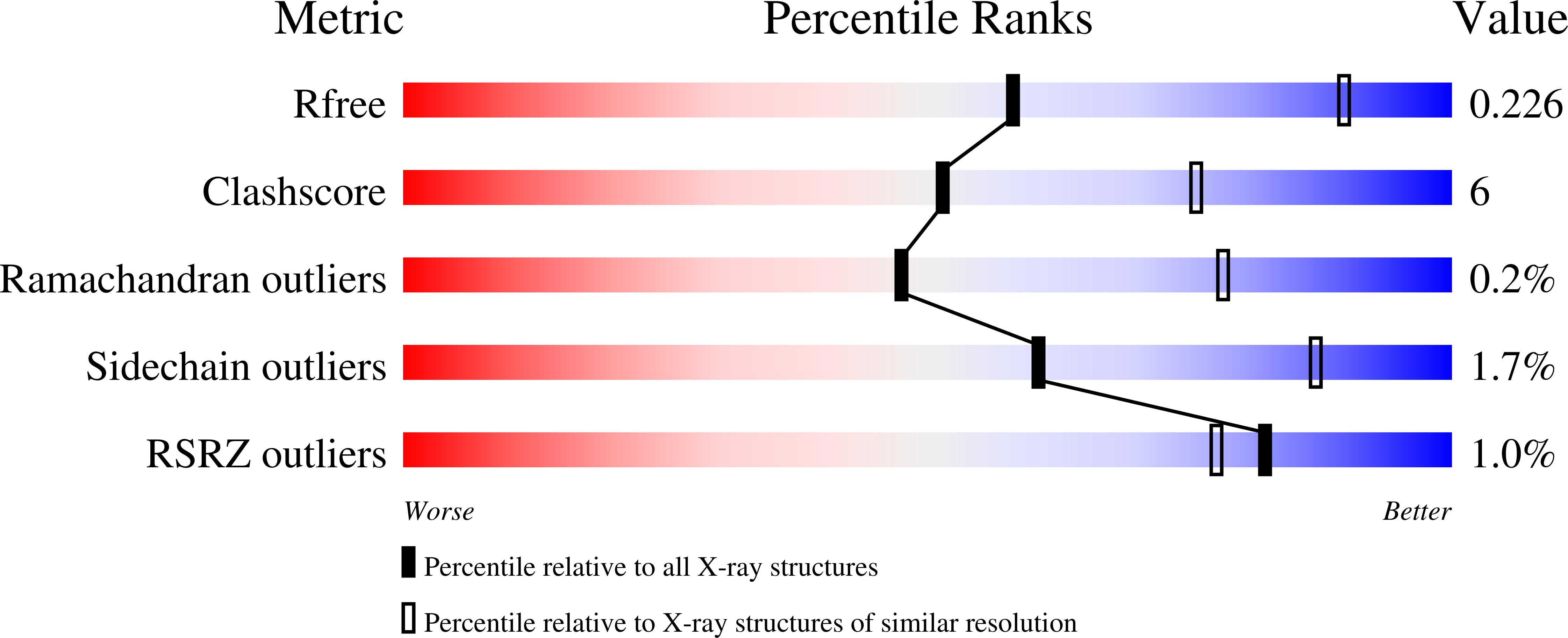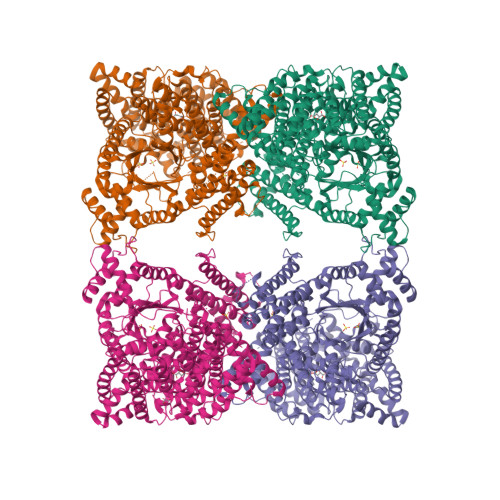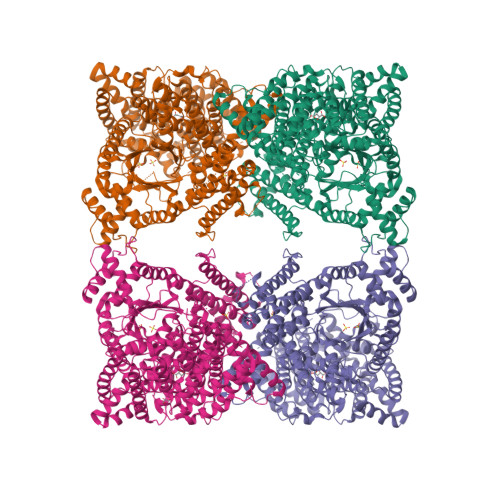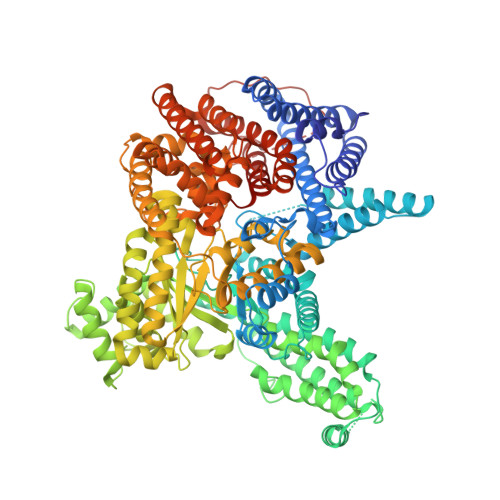Two new T-state crystal structures of maize C 4 -phosphoenolpyruvate carboxylase reveal and suggest novel structural features of the allosteric regulation and carboxylation step.
Carrizosa-Carbajal, E.I., Gonzalez-Segura, L., Munoz-Clares, R.A.(2024) Int J Biol Macromol : 135134-135134
- PubMed: 39208913
- DOI: https://doi.org/10.1016/j.ijbiomac.2024.135134
- Primary Citation of Related Structures:
6U2T, 6V3O - PubMed Abstract:
To get a deeper understanding of the structural bases of the allosteric transition between T and R states of plant and bacterial phosphoenolpyruvate carboxylases (PEPCs), we obtained the first T-state crystal structures of the maize photosynthetic PEPC (ZmPEPC-C 4 ) and exhaustively compared them with the previously reported R-state ZmPEPC-C 4 and other T-state structures. We identified previously unrecognized significant conformational changes in the T state: that of the α8-α9 loop, which connects the two kinds of activator allosteric sites with the active site, the conversion of the α30 helix into a 3 10 helix, leading to the disorganization of the active site lid and activators allosteric sites, and the closure of the inhibitor allosteric-site lid. Additionally, we identified previously overlooked, highly conserved residues of potential interest in the allosteric transition, including two histidines whose protonation might stabilize the T state. The crystal structures reported here also suggest similar tetrameric quaternary arrangements of PEPC enzymes in the R and T states, and the location of the bicarbonate binding site, as well as the conformational changes required for the carboxylation step. Our findings and working hypothesis advance the understanding of the structural features of the allosteric PEPC enzymes and provide a foundation for future experiments.
Organizational Affiliation:
Departamento de Bioquímica, Facultad de Química, Universidad Nacional Autónoma de México, Ciudad Universitaria, 04510 Ciudad de México, Mexico.





















